Optimism Bias Affects Scam Victims Mostly After The Scam Ends – Leading Them To Be Scammed Again And Again
Optimism bias (or the optimistic bias) is a cognitive bias that causes someone to believe that they themselves are less likely to experience a negative event. It is also known as unrealistic optimism or comparative optimism.
It is important to remember that cognitive biases are a blend of features in each and every person, some are more dominant than others, and everyone is different, To understand any given action it takes an understanding that all of these biases that are present and play their part – it is not all just the cause of a cognitive bias. But if you can understand and see the presence of a bias in yourself you can work on reducing its influence and hold over you.
What Is Optimism Bias
Optimism bias is common and transcends gender, ethnicity, nationality, and age. Optimistic biases are even reported in non-human animals such as rats and birds.
Four factors can cause a person to be optimistically biased:
- their desired end state,
- their cognitive mechanisms,
- the information they have about themselves versus others,
- overall mood.
The optimistic bias is seen in a number of situations. For example:
- people believing that they are less at risk of being a crime victim
- smokers believing that they are less likely to contract lung cancer or disease than other smokers
- people thinking they have strong immune systems and will not get COVID
- first-time bungee jumpers believing that they are less at risk of an injury than other jumpers
- traders who think they are less exposed to potential losses in the markets
- scam victims believing that because they were scammed once it will never happen again
- scam victims believing that they know best after their scam end and they do not need to listen to experts
Although the optimism bias occurs for both positive events (such as believing oneself to be more financially successful than others) and negative events (such as being less likely to have a drinking problem), there is more research and evidence suggesting that the bias is stronger for negative events (the valence effect).
Different consequences result from these two types of events: positive events often lead to feelings of well-being and self-esteem, while negative events lead to consequences involving more risk, such as engaging in risky behaviors and not taking precautionary measures for safety. This can be especially true for scam victims after the scam ends and the initial shock and panic is over.
Before We Begin To Explain – Let’s Talk About Scam Victims
There are many phases of a scam victim’s journey that this bias will come into play. It is important to identify them so that as you read you can understand the context and application of what you are reading.
- Before the Scam
- During the Scam
- After the Scam – these are alternate tracks or paths that a victim might take
- Immediate Aftermath
- Track 1: Exposing Scammers
- Track 2: Vigilantism
- Track 3: Denial
- Track 4: Recovery Process
Before the Scam
We often see victims talk about their optimism as they entered dating websites and began looking for a new partner. They have very unrealistic approaches to bother their expectations of what is possible (based upon who they are) and any concerns about security or risk (though this latter is more Normalcy Bias).
Optimism bias helps a 90-year-old believe that a 20-year-old porn star will love them if they can just send some money. This plays out in a thousand ways with equally unrealistic and overly optimistic attitudes.
During the Scam
Optimism bias helps fuel the scammer’s own grooming and manipulation, especially when there are clear impossibilities in the structure of the relationship. These include age, physical appearance, life experiences, wealth, and so many more. This is not to say that huge differences make relationships impossible, but in the very one-dimensional fairy tale of the scams looking back at it with rational eyes the stories were clearly unbelievable and only a strong bias and the scammer’s constant manipulation and control would have ever made a victim believe them.
After the Scam – Immediate Aftermath
In the immediate aftermath of the scam, the opposite of Optimism Bias comes through – extreme pessimism helps to drive the frantic search for saviors. This tends to drive new victims into the worst places for them – into amateur anti-scam hate groups, into vigilantism and vengeance, or into deep despair and denial.
After the Scam – Exposing Scammers
One of the tracks or paths a new victim can take is into the “scammer hate” path. Their optimism bias compels them into believing that they (and a few of their new friends) are going to single-handedly stop the scammers. By exposing scammers, their optimistic view is that it will shame these professional criminals into giving up their very lucrative business and go straight because it is the right thing to do! They constantly leave comments about how scammers should go and get honest jobs. Ultimately, this will, in the long run just increase their trauma and the difficulty they will have in recovering.
After the Scam – Vigilantism
Another track that new victims fall into because of their optimism bias is the unique form of vigilantism called “scam baiting.” In this unrealistic scenario, these victims believe that by wasting the time of scammers they are going to make scamming both unprofitable and that scammers will get tired of scamming.
After the Scam – Denial
Sadly, this pathway or track will take the victim to the pessimism side and lead them to believe that nothing is being done by anyone, so why should they try. Obviously, this is a false belief system and that huge amounts of work are being done, but their pessimism bias leads them to the wrong conclusion and steadfast beliefs in the opposite.
After the Scam – The Recovery Process
Assuming that a victim is getting real professional help to recover after the scam, the optimism bias shows up here too! After a few days into the process, the victim begins to believe that they have this whole process down – they know what they are doing – they have this scam thing beat! They begin to develop a false sense of self-knowledge, a false sense that they are not as traumatized as others, and that they now know best what they need and which way to finish their recovery.
This is effectively a cliff they are jumping off. Their optimism about their recovery leads them to ignore important information and psychological clues about their real underlying condition, allowing for worsening trauma. It also helps them ignore the central fact that traumatized victims have cognitive impairment and make bad decisions. This can lead – for example – right back into the dating website world and the sear for the next partner. Or if their scam was not a romance scam, back to the next big deal, lotto, etc. The optimism bias plays a very large role it driving victims to be scammed again and again. It also substantially delays or derails the victim’s recovery process – some discover this and come back onto the proper path, but most do not.
However, the opposite is also possible. Pessimism bias can leave recovering victims to believe that they are doomed and nothing will ever get better!
This article is by:
SCARS™ – Society of Citizens Against Relationship Scams Inc.
A scams & financial fraud crime victims assistance & crime prevention nonprofit organization headquartered in Miami Florida USA & Monterrey NL Mexico, with partners in more than 60 countries worldwide
If you are a Victim sign up for our FREE SCARS Support Groups at support.AgainstScams.org
To learn more about SCARS, or to Join, Volunteer, or Donate visit: AgainstScams.org
To see Scammer Photos visit www.ScammerPhotos.com
Contact Us: Contact@AgainstScams.org
Statement About Victim Blaming
Some of our articles discuss various aspects of victims. This is both about better understanding victims (the science of victimology) and their behaviors and psychology. This helps us to educate victims/survivors about why these crimes happened and to not blame themselves, better develop recovery programs, and to help victims avoid scams in the future. At times this may sound like blaming the victim, but it does not blame scam victims, we are simply explaining the hows and whys of the experience victims have.
These articles, about the Psychology of Scams or Victim Psychology – meaning that all humans have psychological or cognitive characteristics in common that can either be exploited or work against us – help us all to understand the unique challenges victims face before, during, and after scams, fraud, or cybercrimes. These sometimes talk about some of the vulnerabilities the scammers exploit. Victims rarely have control of them or are even aware of them, until something like a scam happens and then they can learn how their mind works and how to overcome these mechanisms.
Articles like these help victims and others understand these processes and how to help prevent them from being exploited again or to help them recover more easily by understanding their post-scam behaviors. Learn more about the Psychology of Scams at www.ScamPsychology.org
Contributing Factors
The factors leading to the optimistic bias can be categorized into four different groups:
- desired end states of comparative judgment
- cognitive mechanisms
- information about the self versus a target
- underlying affect
Cognitive Mechanisms
The optimistic bias is possibly also influenced by three cognitive mechanisms that guide judgments and decision-making processes: the representativeness heuristic, singular target focus, and interpersonal distance.
Representativeness
The estimates of likelihood associated with the optimistic bias are based on how closely an event matches a person’s overall idea of the specific event.[3] Some researchers suggest that the representativeness heuristic is a reason for the optimistic bias: individuals tend to think in stereotypical categories rather than about their actual targets when making comparisons.
For example, when drivers are asked to think about a car accident, they are more likely to associate a bad driver, rather than just the average driver. Scam victims tend to see the criminals as evil instead of just average people doing a bad thing.
Individuals compare themselves with the negative elements that come to mind, rather than an overall accurate comparison between them and another person.
Additionally, when individuals were asked to compare themselves to friends, they chose more vulnerable friends based on the events they were looking at. Individuals generally chose a specific friend based on whether they resemble a given example, rather than just an average friend. People find examples that relate directly to what they are asked.
Singular Target Focus
One of the difficulties of the optimistic bias is that people know more about themselves than they do about others. While individuals know how to think about themselves as a single person, they still think of others as a generalized group, which leads to biased estimates and the inability to sufficiently understand their target or comparison group. Likewise, when making judgments and comparisons about their risk compared to others, people generally ignore the average person but primarily focus on their own feelings and experiences.
Thus if someone has never been the victim of an online crime it is beyond their experience and the bias tends to force it to be overlooked.
Interpersonal Distance
Perceived risk differences occur depending on how far or close a compared target is to an individual making a risk estimate.
The greater the perceived distance between the self and the comparison target, the greater the perceived difference in risk. This plays a big role when it comes to online scams where distances are extreme – leading the victim to believe that there is little or no risk because of this.
When one brings the comparison target closer to the individual, risk estimates appear closer together than if it was someone more distant to the person. Yet, in the online world, someone half a world away can be more dangerous than someone across the street!
Studies have also noticed that people demonstrate more optimistic bias when making comparisons when the other is a vague individual (well, a fake profile is certainly vague!), but biases are reduced when the other is a familiar person, such as a friend or family member. This also is determined due to the information they have about the individuals closest to them, but not having the same information about other people. In other words, having less information about the other person allows the bias to create a greater false sense of safety.
Comparative Judgment
Many explanations for the optimistic bias come from the goals that people want and the outcomes they wish to see.
People tend to view their risks as less than others because they believe that this is what other people want to see. These explanations include self-enhancement, self-presentation, and perceived control.
Self-enhancement
Self-enhancement suggests that optimistic predictions are satisfying and that it feels good to think that positive events will happen.
People can control their anxiety and other negative emotions if they believe they are better off than others.
People tend to focus on finding information that supports what they want to see happen, rather than what will happen to them – this is the Confirmational Bias at work. With regards to the optimistic bias, individuals will perceive events more favorably, because that is what they would like the outcome to be. This also suggests that people might lower their risks compared to others to make themselves look better than average: they are less at risk than others and therefore better. This is a common thing in dating where one person does not want to look needing or too much of a drama magnet, so they minimize themselves and accept more risks to appear less risky.
Self-presentation
Studies suggest that people attempt to establish and maintain a desired personal image in social situations. People are motivated to present themselves to others in a good light, and some researchers suggest that the optimistic bias is a representative of self-presentational processes: people want to appear better off than others.
We see this in victims starting and through recovery – they minimize their real situation or condition to appear better than other victims.
However, this is not through conscious effort. In a study where participants believed their driving skills would be either tested in either real-life or driving simulations, people who believed they were to be tested had less optimistic bias and were more modest about their skills than individuals who would not be tested. Studies also suggest that individuals who present themselves in a pessimistic and more negative light are generally less accepted by the rest of society.
In our support and recovery programs, we use personal challenges to help victims see through their biases and to be better able to make realistic self-assessments of their state of recovery and personal situations.
Personal Control/Perceived Control
People tend to be more optimistically biased when they believe they have more control over events than others or more control than is real.
For example, people are more likely to think that they will not be harmed in a car accident if they are driving the vehicle. Another example is that if someone believes that they have a lot of control over becoming infected with COVID, they are more likely to view their risk of contracting the disease to be low. Scam victims believe they are less likely to become victims, even if they are aware of the risks because they know they are smarter than other people.
Studies have suggested that the greater perceived control someone has, the greater their optimistic bias. Stemming from this, control is a stronger factor when it comes to personal risk assessments, but not when assessing others, especially online criminals.
An opposite factor of perceived control is that of prior experience: Prior experience is typically associated with less optimistic bias, which some studies suggest is from either a decrease in the perception of personal control or making it easier for individuals to imagine themselves at risk. Prior experience suggests that events may be less controllable than previously believed. But our experience shows that this does not apply to all victims – less than 10% will be affected by this.
Information About Self Versus The Other
Individuals know a lot more about themselves than they do about others.
Because information about others is less available, information about the self versus others leads people to make specific conclusions about themselves, but results in them having a harder time making conclusions about the risks associated with others. This leads to differences in judgments and conclusions about self-risks compared to the risks coming from others, leading to acceptance of higher-risk behaviors because of this gap.
Person-Positivity Bias
Person-positivity bias is the tendency to evaluate an object more favorably the more the object resembles an individual human being.
Now think about that for a moment – we all have attributes we attribute to ourselves. And we tend to like those attributes in other people and other things. Thus a person who has similar symmetries in their face to your own (or your idealized version of your own) will tend to evoke more immediate acceptance.
Generally, the more a comparison target resembles a specific person, the more familiar it will be. This related back far into our human past – we recognize racial and tribal likeness as being safer. Scammers also know this and steal photos to make this connection. But since they do not really understand it, they steal billions of photos and rely on the fact that there has to be one for each potential victim.
However, larger groups of people are considered to be more abstract concepts, which leads to less favorable judgments. With regards to the optimistic bias, when people compare themselves to an average person, whether someone of the same sex or age, the target continues to be viewed as less human and less personified, which will result in less favorable comparisons between the self and others. But when the opposite, compared to a different sex or age it can enhance the bias.
Egocentric Thinking
“Egocentric thinking” refers to how individuals know more of their own personal information and risk that they can use to form judgments and make decisions. In other words, they base their decisions more on their own perceptions of self rather than the reality around them.
One difficulty, though, is that people tend have a large amount of knowledge about themselves, but no knowledge about other people (in the general sense). Therefore, when making decisions, people have to use other information available to them, in order to learn more about the other person they are making a decision about. This can relate to an optimism bias because while people are using the available information they have about themselves, they have more difficulty understanding correct information about others. What this means is that they tend to project more of their own characteristics onto the other person when making decisions and assessing risks – a very common trap all victims fell into.
Underestimating The Other Person’s Control
As a rule, individuals underestimate the amount of control the other person has over them. This is true in all contexts and social settings, even with avatars such as the talking heads on the evening news! Even complete strangers exert control over all of us, but being aware of it helps to overcome our optimistic views.
This is explained in two different ways:
- People underestimate the control that others have in their lives.
- People completely overlook that others have control over their own outcomes.
For example, many smokers believe that they are taking all necessary precautionary measures so that they won’t get lung cancer, such as smoking only once a day, or using filtered cigarettes, and believe that others are not taking the same precautionary measures. However, it is likely that many other smokers are doing the same things and taking those same precautions.
Scam victims when they wander around in social media or even on dating websites believe they are in full control – of course until they are not, and then they don’t even see that change.
Underlying Affect
The last factor of optimistic bias is that of underlying affect and the affect experience.
Research has found that people show less optimistic bias when experiencing a negative mood, and more optimistic bias when in a positive mood.
Social media and dating website operators use social engineering to help enhance this. No think about this for a minute. Website platforms use social engineering to enhance your biases to make you less safe online – they do this purposefully!
Sad or negative moods reflect greater memories of negative events, which lead to more negative judgments, while positive moods promote happy memories and more positive feelings. This suggests that overall negative moods, including depression, result in increased personal risk estimates but less optimistic bias overall. This is kind of an ironic twist, the worse your feel, the more likely the safer you will be.
Anxiety also leads to less optimistic bias, continuing to suggest that overall positive experiences and positive attitudes lead to more optimistic bias in events.
Health Consequences
In health, the optimistic bias tends to prevent individuals from taking on preventative measures for good health.
For example, people who underestimate their comparative risk of heart disease know less about heart disease, and even after reading an article with more information, are still less concerned about the risk of heart disease, because the optimistic bias can be a strong force in decision-making, it is important to look at how risk perception is determined and how this will result in preventative behaviors.
We also see this bother before, during, and after scams with scam victims. This is especially true with victims understanding their level of trauma.
Risk perceptions are particularly important for individual behaviors, such as exercise, diet, and even sunscreen use.
Another example of this is concerning vaccines, perceptions of those who have not been vaccinated when compared to the perceptions of people who have been. People who have been vaccinated tend to be more knowledgeable about the real risks and benefits than those who avoid it. This is because the ones that get the vaccine tend to learn more balanced information, while those opposing vaccines tend to only look at negative effects.
Valence Effect
Valence (psychology) or hedonic tone, is the (emotional) value associated with an event, object or situation
The valence effect is used to look at the effect of valence on unrealistic optimism.
The valence effect, which is also considered a form of cognitive bias, has several real-world implications.
For instance:
- it can lead to the overestimation of a company’s future earnings by investors and this could contribute to a tendency for it to become overpriced.
- in achieving organizational objectives, it could encourage people to produce unrealistic schedules helping drive a so-called planning fallacy, which often results in making poor decisions and project abandonment.
- in parenting, it can often result in poor outcomes for the child by having unrealistic expectations.
- it profoundly affects relationships and interpersonal situations.
- for scam victims, it can set the stage for that initial entrapment since victims have totally unrealistic expectations going into the initial stages of these fake relationships.
Attempts To Alter And Eliminate
Studies have shown that it is very difficult to eliminate the optimistic bias.
Some commentators believe that trying to reduce it may encourage people to adapt to health-protective or safety-focused behaviors. However, research has suggested that it cannot be reduced and that efforts to reduce it tend to lead to even more optimistically biased results.
In a research study of four different tests to reduce the optimistic bias, through lists of risk factors, participants perceived themselves as inferior to others, participants were asked to think of high-risk individuals, and giving attributes of why they were at risk, all increased the bias rather than decreased it.
Here is the link to that research if you are interested: Weinstein, Neil D.; William M. Klein (1995). “Resistance of Personal Risk Perceptions to Debiasing Interventions”. Health Psychology. 14 (2): 132–140.
Other studies have tried to reduce the bias by reducing distance, but overall it still remains.
Hofstadter’s Law
This seemingly paradoxical situation – in which an attempt to reduce bias can sometimes actually increase it
“Hofstadter’s Law” says that:
It always takes longer than you expect, even when you take into account Hofstadter’s law.
In other words, it always takes long even when you assume it takes longer!
But Reduction May Be Possible
Although research has suggested that it is very difficult to eliminate the bias, some factors may help in closing the gap of the optimistic bias between an individual and the world around them.
First, by placing the comparison group closer to the individual (that is the perception of closeness), the optimistic bias can be reduced: studies found that when individuals were asked to make comparisons between themselves and close friends, there was almost no bias occurring. Additionally, actually experiencing an event leads to a decrease in the optimistic bias (but only as it applies to the same situation in the future). While this only applies to events with prior experience, knowing the previously unknown will result in less optimism of it not occurring.
Pessimism Bias
The opposite of optimism bias is pessimism bias (or pessimistic bias), because the principles of the optimistic bias continue to be in effect in situations where individuals regard themselves as worse off than others. Optimism may occur from either a distortion of personal estimates, representing personal optimism or a distortion of others, representing personal pessimism.
Pessimism bias is an effect in which people exaggerate the likelihood that negative things will happen to them. It contrasts with optimism bias. This can have a big effect when victims are trying to see the light at the end of the tunnel during their recovery.
People with depression are particularly likely to exhibit pessimism bias. We also see it present in victims with significant trauma as well.
What To Do About This?
Obviously, this is complex and may be very difficult for some to accept. That is just one of the reasons why SCARS suggests that all scam victims, and maybe their family members too, find a local trauma counselor or therapist.
Even if you do not feel you are traumatized, get yourself evaluated – trauma is nasty and it hides, but it never goes away on its own.
A trauma counselor than be very helpful in helping you to see your biases, work through them and other issues you may have and reduce your trauma – whether past or present.
Here are resources to help you find trauma professionals in your area or country:
-/ 30 /-
What do you think about this?
Please share your thoughts in a comment below!
Article Rating
Table of Contents
- There Is Nothing To Worry About!
- Optimism Bias Affects Scam Victims Mostly After The Scam Ends – Leading Them To Be Scammed Again And Again
- What Is Optimism Bias
- Before We Begin To Explain – Let’s Talk About Scam Victims
- More About Cognitive Biases & Vulnerabilities
- Contributing Factors
- Cognitive Mechanisms
- Representativeness
- Singular Target Focus
- Interpersonal Distance
- Comparative Judgment
- Health Consequences
- Valence Effect
- Attempts To Alter And Eliminate
- Pessimism Bias
- What To Do About This?
RATE THIS ARTICLE?
LEAVE A COMMENT?
Thank you for your comment. You may receive an email to follow up. We never share your data with marketers.
Recent Comments
On Other Articles
- on Dating Scammers Paradise: Ivory Coast: “The Ivory Coast romance scam is still going on. It seems that local authorities don’t handle the issue effectively!” Dec 10, 02:17
- on The SCARS Institute Top 50 Celebrity Impersonation Scams – 2025: “Thank you – we will.” Dec 7, 11:41
- on The SCARS Institute Top 50 Celebrity Impersonation Scams – 2025: “You should add Sean Bean to your list of Celebrities. This one is very good, and persistent. He will be…” Dec 2, 12:07
- on How You Think & Talk About Your Scam Affects Your Recovery: “I have hung on to the scams for far too long. With the intervention of an all-merciful God, I have…” Nov 6, 22:13
- on Disengaging From A Fake Scam Relationship: “Taci, you may want to join our new support community at www.SCARScommunity.org” Nov 6, 03:01
- on Disengaging From A Fake Scam Relationship: “This particular article helped me discover the many things I did wrong the first time I was scammed. I should…” Nov 5, 22:49
- on About the SCARS RomanceScamsNOW.com Website – 24 Years Published: “It was unavailable for a few days, but it is available again. If he would be interested, he is welcome…” Nov 5, 00:59
- on About the SCARS RomanceScamsNOW.com Website – 24 Years Published: “My husband has been scammed and your classes have been helping him but now he can’t seem to access them.…” Oct 26, 14:57
- on Talia Shepard – Impersonation Victim – Stolen Photos – 2024: “Hi, I’m Patrick from Belgium and I found this site by chance, so I just got to know it, and…” Oct 17, 23:46
- on Talia Shepard – Impersonation Victim – Stolen Photos – 2024: “Hallo ik ben Patrick uit Belgie en het is in verband over PayPal. Ik heb het dit jaar spijtig genoeg…” Oct 17, 23:08
ARTICLE META
Important Information for New Scam Victims
- Please visit www.ScamVictimsSupport.org – a SCARS Website for New Scam Victims & Sextortion Victims
- Enroll in FREE SCARS Scam Survivor’s School now at www.SCARSeducation.org
- Please visit www.ScamPsychology.org – to more fully understand the psychological concepts involved in scams and scam victim recovery
If you are looking for local trauma counselors please visit counseling.AgainstScams.org or join SCARS for our counseling/therapy benefit: membership.AgainstScams.org
If you need to speak with someone now, you can dial 988 or find phone numbers for crisis hotlines all around the world here: www.opencounseling.com/suicide-hotlines
A Note About Labeling!
We often use the term ‘scam victim’ in our articles, but this is a convenience to help those searching for information in search engines like Google. It is just a convenience and has no deeper meaning. If you have come through such an experience, YOU are a Survivor! It was not your fault. You are not alone! Axios!
A Question of Trust
At the SCARS Institute, we invite you to do your own research on the topics we speak about and publish, Our team investigates the subject being discussed, especially when it comes to understanding the scam victims-survivors experience. You can do Google searches but in many cases, you will have to wade through scientific papers and studies. However, remember that biases and perspectives matter and influence the outcome. Regardless, we encourage you to explore these topics as thoroughly as you can for your own awareness.
Statement About Victim Blaming
Some of our articles discuss various aspects of victims. This is both about better understanding victims (the science of victimology) and their behaviors and psychology. This helps us to educate victims/survivors about why these crimes happened and to not blame themselves, better develop recovery programs, and to help victims avoid scams in the future. At times this may sound like blaming the victim, but it does not blame scam victims, we are simply explaining the hows and whys of the experience victims have.
These articles, about the Psychology of Scams or Victim Psychology – meaning that all humans have psychological or cognitive characteristics in common that can either be exploited or work against us – help us all to understand the unique challenges victims face before, during, and after scams, fraud, or cybercrimes. These sometimes talk about some of the vulnerabilities the scammers exploit. Victims rarely have control of them or are even aware of them, until something like a scam happens and then they can learn how their mind works and how to overcome these mechanisms.
Articles like these help victims and others understand these processes and how to help prevent them from being exploited again or to help them recover more easily by understanding their post-scam behaviors. Learn more about the Psychology of Scams at www.ScamPsychology.org
Psychology Disclaimer:
All articles about psychology and the human brain on this website are for information & education only
The information provided in this article is intended for educational and self-help purposes only and should not be construed as a substitute for professional therapy or counseling.
While any self-help techniques outlined herein may be beneficial for scam victims seeking to recover from their experience and move towards recovery, it is important to consult with a qualified mental health professional before initiating any course of action. Each individual’s experience and needs are unique, and what works for one person may not be suitable for another.
Additionally, any approach may not be appropriate for individuals with certain pre-existing mental health conditions or trauma histories. It is advisable to seek guidance from a licensed therapist or counselor who can provide personalized support, guidance, and treatment tailored to your specific needs.
If you are experiencing significant distress or emotional difficulties related to a scam or other traumatic event, please consult your doctor or mental health provider for appropriate care and support.
Also read our SCARS Institute Statement about Professional Care for Scam Victims – click here to go to our ScamsNOW.com website.




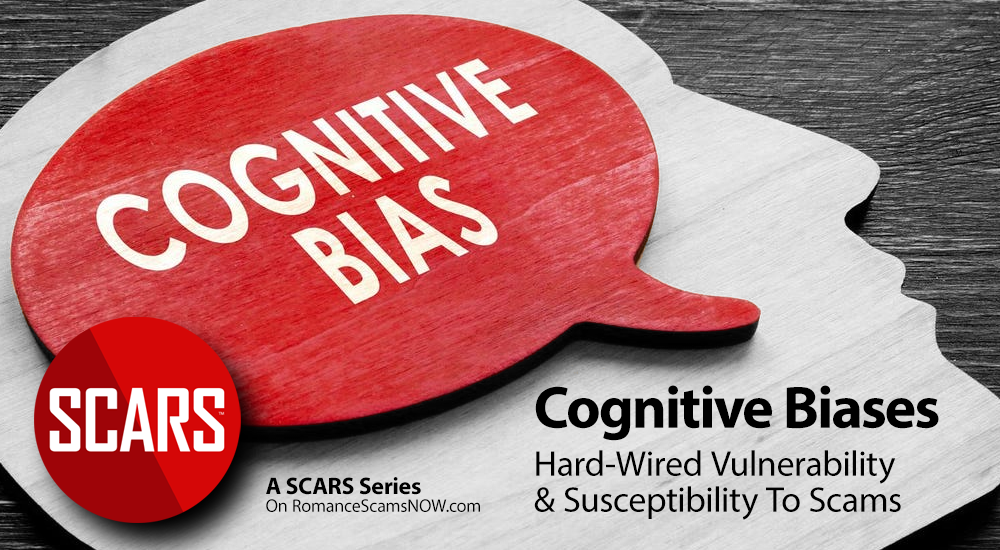



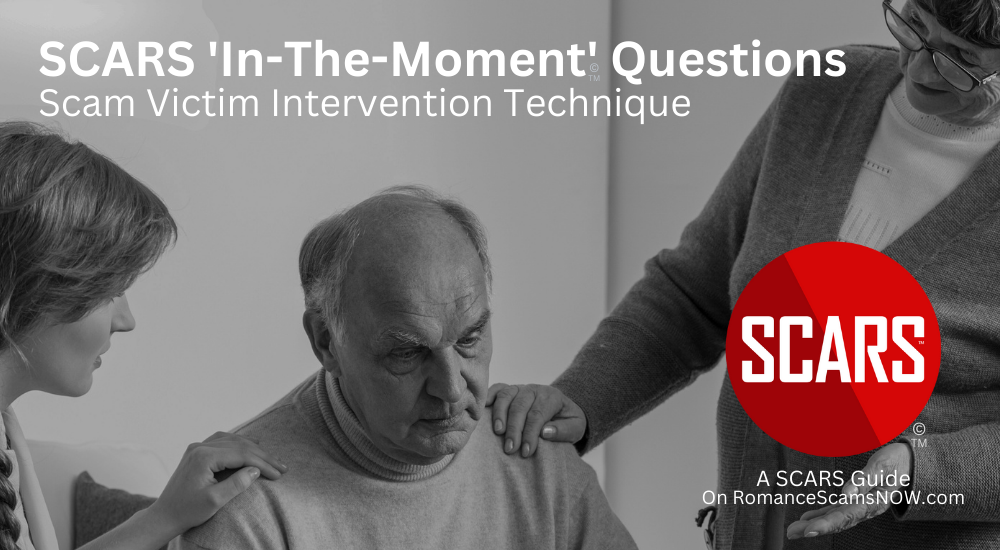
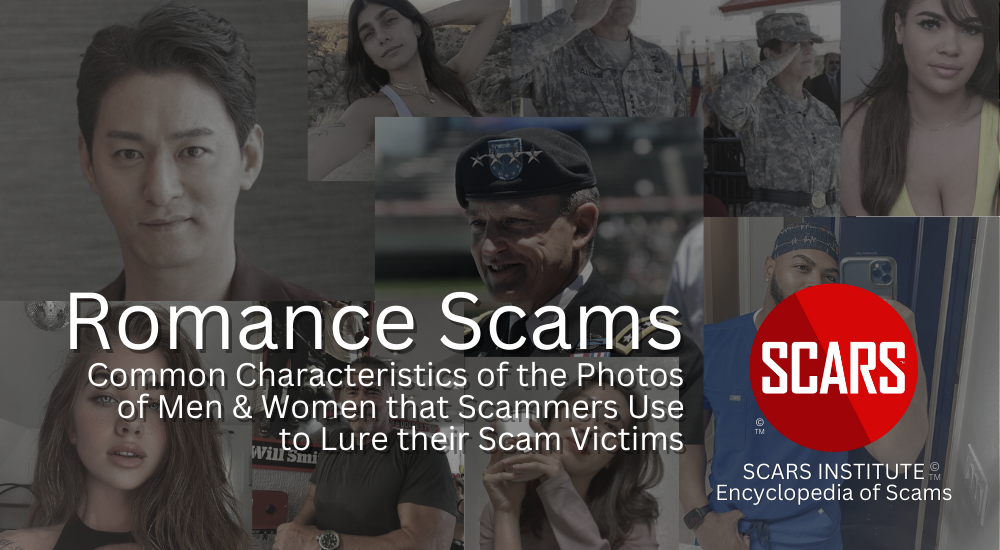

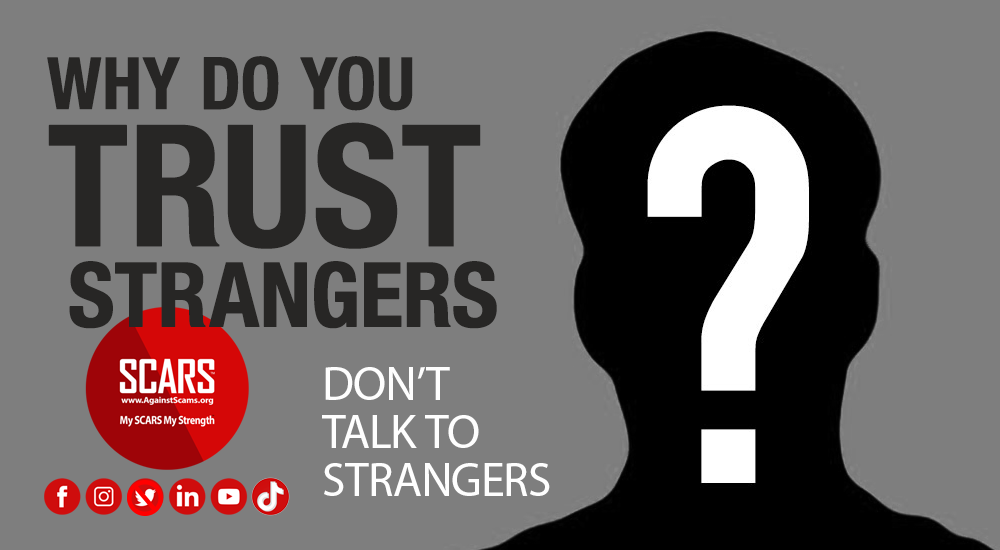

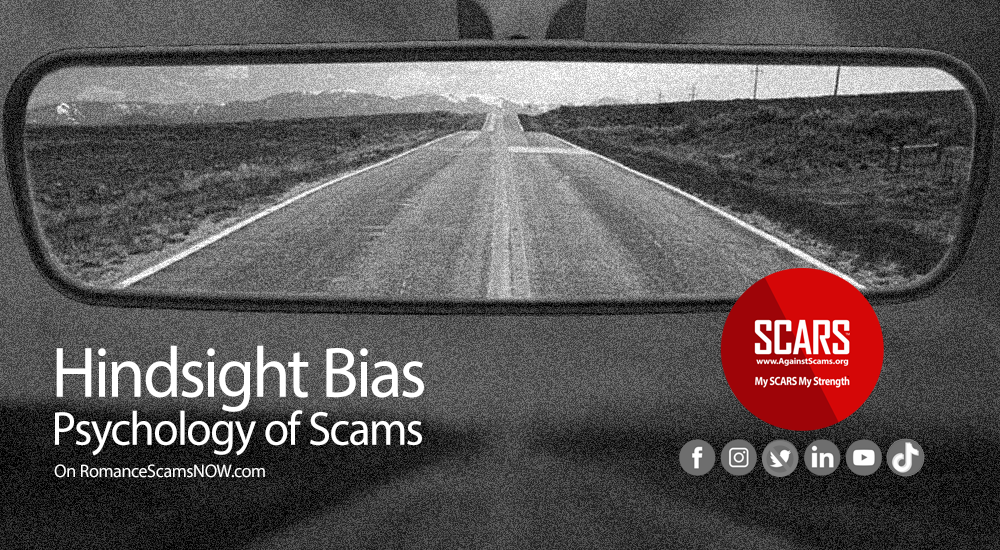











Optimism definitely played a role in my case. I’m by nature an optimistic person and thought somehow, someway it would all turn around in my favor. I was, after all, simply trying to help someone else out, so how could I be punished for that? I was so wrong.
Optimism bias is very complex. It was a little difficult for me to understand. I have never been an overly optimistic person most of my life. I learned early on with my parents that if I was optimistic and excited about a coming event that I was criticized by them that I was putting too much emphasis on the situation and that I would be disappointed afterwards. To this day, I don’t enjoy holidays or birthdays because I might put too much emphasis on them. In the case of my fraud, I hoped I was wrong even though red flags were constantly tossed. I don’t know definitely if the way my parents approached optimism played a significant role in my fraud, but I know that I relied too heavily on wishful thinking.
Optimism bias was in play with my pig butcher scam. I saw the red flags but believed everything was going to still work out for the best. I was wrong.